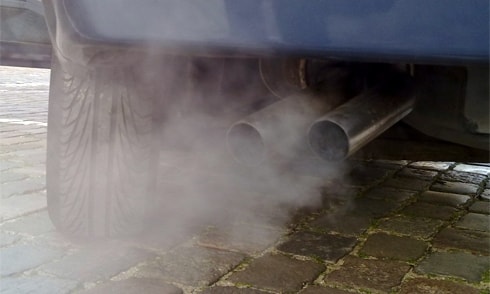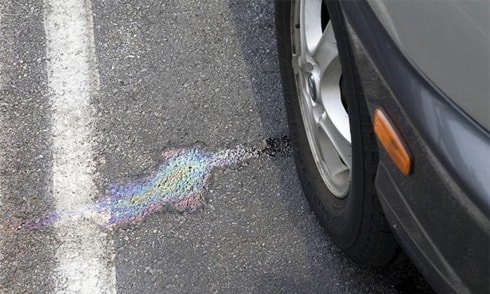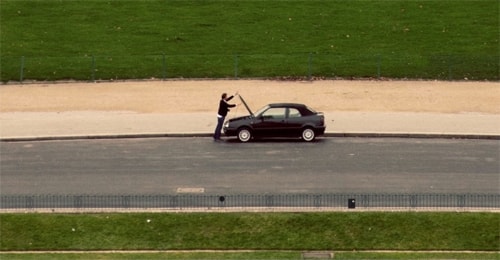5 warning signs your car needs care
Just one of these five signs is enough reason to take your car to a service and maintenance center.
Even the most reliable cars in the world can break down. And it’s the driver’s responsibility to prevent that from happening. No matter how technologically advanced a car is, there’s always a chance it will stop working or a problem will become serious. Some models are more prone to failure than others, and warnings are “very superficial,” according to Autoevolution.
It could be an error that can be recognized by the naked eye, or an electronic problem that requires a little knowledge of cars to recognize. But the sooner the risks are recognized, the more the car user can save time and money on repairs and replacements.
1. Lots of smoke

When your car’s exhaust pipe is emitting more smoke than usual, you should know that there is a problem with the engine. Even diesel cars, which emit more smoke than gasoline engines, should be more concerned.
There are four types of exhaust smoke: white, gray, blue, and black. Each indicates a different state of health for the vehicle. Don’t confuse steam with white smoke. If you see white smoke, it means the engine is pushing water out through the exhaust. This is caused by a faulty cylinder head gasket. On diesels, it could be a problem with the injectors.
Blue smoke is easy to spot - the engine is "drinking" oil. If you see blue smoke when accelerating or after starting, it means that the piston rings need to be replaced. This is an expensive repair, but if you don't do it, things will get worse.
Black smoke indicates that the engine is consuming fuel. With a gasoline engine, the engine needs a tune-up. With a diesel engine, the black smoke may be from over-combustion. In either case, the car needs to be checked.
Gray smoke can be a sign of a number of problems, from a bad breather valve to a faulty cylinder head. Gray smoke appears when the engine is burning oil and can cause coolant to leak into the combustion chamber.
2. Leaks

A car uses many types of oil, and any type can leak after a period of use. Pay attention to the road where you park your car to detect oil leaks as soon as possible.
Learn how to check your car's oil. Abnormal oil levels can indicate leaks. Oil, coolant, gasoline, brake fluid, transmission fluid, power steering fluid, and suspension fluid leaks can all be easily spotted right where you park.
Look at the rims and if you see oil on them and it wasn’t caused by driving on wet or dirty ground, it could be a leak in the brake lines or pads. Ignoring this could lead to a brake failure accident.
You may also notice a brake problem if your brake pedal feels lighter than usual. If this happens again while driving, pull over and check the brake fluid. Don’t drive if the fluid level is low.
Oil leaks can also be seen in the engine by looking at the joint between the cylinder head and cylinder block. However, do not ignore even the smallest leak, as it will lead to much worse consequences.
3. Strange noises
Over time, some cars develop noises (squeaks, rattles, rattles, etc.). In short, any unusual noises. If the car squeaks when going over a small bump, the shock absorbers need to be checked and new bushings are needed.
If the noise is caused by a large pothole, it may be normal, but if it persists, it may be a sign of trouble. Check the undercarriage after a loud impact. The most you can do is use a flashlight to check the shock absorbers for leaks, cracks, or broken parts. If the noise gets louder, stop the car and call for help.
Knocking noises are the worst sound a driver can hear. They indicate engine trouble, and are often quite costly.
4. Minor errors

These types of problems don't just happen every day, they build up in a big way. For example, if you notice an increase in fuel consumption even though you haven't changed your driving style, it's time to get your car tuned up and checked. Also look out for power loss, strange noises when shifting gears, and unusual engine performance.
If the engine is difficult to start in certain situations, make a note of it. If this happens again, consult a mechanic and have the car checked. Also keep an eye on the coolant temperature gauge (if equipped).
If your vehicle has been modified from the original, make sure to equip it with corresponding oil temperature and oil pressure gauges to know about problems as soon as they appear.
5. Bad signs
Have you noticed any problems with your headlights or electrical system? Pay attention to fluctuating headlight output while idling, as well as changes in intensity when accelerating from idle. The problem could be with the electrical connections.
The fuse box is the first place to check if something electrical is not working properly. If you have a problem, you should call a professional. Both being frugal and lazy can lead to a fire or explosion.
Occasionally, turn off the music and listen for any unusual noises. Note where they come from and when. Then seek advice or even have your car “checked” if necessary.
Caring for your car can save your life in an emergency, and save you money on repairs and replacements. Be a responsible driver and drive safely at all times.
